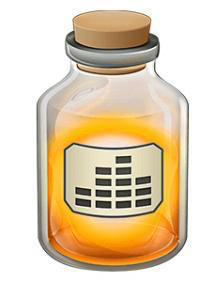Kirk McElhearn’s new, US$10 “Take Control of Audio Hijack” (http://tid.bl.it/tco-audio-hijack-info) explains both the basics and the subtleties of Audio Hijack 3’s flowchart-like interface.
Audio Hijack is a Mac OS X tool for recording and enhancing audio, to version 3.2. With the utility, audio from individual applications like Safari or Skype, hardware audio devices like microphones and mixers, and even the entire system audio output, can all be saved. In version 3.2, Time Shift Block now features a popover that can be made to float above other windows for easy access from any application. As well, global hotkeys enable access to Time Shift’s controls without even using the mouse.
Readers of “Take Control of Audio Hijack” will learn how to capture and enhance any audio playing on a Mac, with step-by-step instructions for common scenarios — including recording audio playing in Safari, capturing Skype and FaceTime calls, digitizing your old LPs, extracting audio from concert DVDs, and working with mics and mixers, among much else.
Readers will learn how to pipe sound through Audio Hijack to enhance its quality without recording. For example, by boosting the volume or tweaking the bass — movies on Netflix never sounded better.
Readers of “Take Control of Audio Hijack” will also discover special features such as reusable sessions, recording to more than one file (and format) at once, scheduling recordings, time shifting during live playback, effects like ducking and panning, adding automatic metadata before recording, and more.
The Fission chapter has directions for trimming, cropping, adding, replacing, splitting, combining, and fading audio. It also explains how to turn an audio file into a ringtone and — podcasters and educators take note! — how to make a chapterized AAC file.
McElhearn also covers the basics of editing recordings in Rogue Amoeba’s Fission audio editor in the 119-page book.


